The Federal Reserve flow of funds accounts for US Households (Table F.100) clearly reveal the forces that drove the recovery in equity prices in the first half of 2009.
By comparing the flow of funds in the year 2007 (at the top of the bubble), with the flows in Q2 2009, a dramatic shift in investor behavior is evident.
Briefly, continued high levels of personal income, combined with lower taxes and historically low interest rates caused by Fed policies, along with fear of hard times to come and the need to save, resulted in a massive shift of funds out of fixed income investments into equities.
These statistics seem to contradict the dismal picture painted in the mass media.
However, by using commonsense and the Fed flow of funds statistics, the forces that influenced equity prices in the first half of 2009 are revealed.
Populist stimulus measures encouraged savings rather than spending
Both the Bush and Obama administrations pushed small amounts of money directly into the hands of consumers in an attempt to revive the economy in 2008 and 2009.
|
|
|
|
No Great Depression, despite political fear-mongers
|
|
|
|
|
The theory, apparently, was that the public would spend these tiny payments, which in turn would cause businesses to produce more to meet demand, leading to rehiring and increased employment.
However, the public, frightened by rapid collapse of securities and real estate markets in 2008, and by dire warnings from the White House of a coming Great Depression — the haranguing of political operators not constrained by any need for historical accuracy — logically concluded that the prudent course would be to not spend money, but to save it for worse days to come.
The Federal Reserve, for its part, decided that lowering interest rates to almost zero would somehow encourage businesses to invest and create new jobs — presumably ignoring the terrifying behavior of a Congress that approved trillion dollar spending bills, without reading them, while favoring programs that would impose higher taxes on small businesses — the principal creators of jobs in the United States.
Rather than create new jobs, businesses became more productive, getting rid of marginal workers and holding on to the best.
Despite the success of the economic fear-mongers in getting the Democrat Party into the White House — the first president without any palpable executive experience — an over-whelming majority of Americans still had jobs and were willing to work harder to keep them.
Increasing the minimum wage resulted in sky-rocketing unemployment for young people — in the case of young black males reaching 50%!
The collapse of credit markets in the last semester of 2008 and the need for banks and other financial intermediaries to de-leverage as quickly as possible, restricted the flow of capital to business — despite the low interest rates.
Here are the figures that show household income, taxes, and savings in 2007 and Q2 2009:
Here we can see that the tax savings doled out in the various stimulus packages did not result in greater spending, but in greater savings.
Only about 10% of the tax stimulus went into consumption — the rest was saved.
Furthermore, despite rising unemployment, household income did not shrink compared to 2007.
Switching from fixed income investments to equities
Not only did individuals save more in Q2 2009, but they shifted funds away from fixed income assets into corporate stocks.
Federal Reserve Release Z.1 F.100 Households and Non-Profits
| US$ billions (Annual rates) |
2007 |
Q2 2009 |
| Net flows (annual basis) |
|
|
| Checkable deposits and currency |
-68.5 |
217.3 |
| Time and savings deposits |
422.7 |
-183.2 |
| Money market fund shares |
232.3 |
-147.8 |
| Credit market instruments |
468.3 |
-647.6 |
| Sub-total (Fixed income and cash) |
1054.8 |
-761.3 |
| Corporate equities |
-794.2 |
288.1 |
| Mutual fund shares |
244.4 |
683.0 |
| Sub-total (Equities and Mutual funds) |
-549.8 |
971.1 |
This table shows a remarkable change in the behavior of ordinary American investors between 2007 (before the Crash of 2008) and in Q2 2009 (after the Crash of 2008 and the introduction of Obamanomics).
The investment behavior in 2007 is easily explained, since it fits a pattern observed since 1982:
- In 2007, corporate executives were selling huge amounts of stocks (over 794.2 billion, annual rate) in order to take profits on their stock options. The main buyers were corporation with buyback programs approved by the executives themselves. See: The Great Misleading, a critical essay on the stock buyback movement.
- After the Crash of 2008, stock buybacks dried up due to lack of corporate funds. Stock prices fell to the point that most executive stock options were “under water”. Consequently, equity sales related to the exercise of options virtually ceased. There always were individual purchasers of equities, even in the buyback era, but the amount of such purchases was hidden by massive sales due to executive options. By Q2 2009, without executive options, 288.1 billion in net equity purchases became visible. The flow of funds accounts don’t indicate whether this amount was greater or less than underlying equity purchases in 2007.
|
|
|
|
Bad credit and inflation threaten securities markets
|
|
|
|
|
- In 2007, individual investors still trusted Standard & Poor’s and believed that money market funds were safe. The table shows that in 2007, investors were taking money out of demand deposits and cash to buy longer term credit instruments.
- In Q2 2009, investors no longer trusted the credit standing of longer term issuers, moving money out of agencies, municipals, corporate bonds, and money market funds, into government guaranteed bank deposits and cash. Extremely low short-term interest rates encouraged this transfer.
- Massive, undisciplined spending authorized by the Obama administration in January 2009 cast serious doubts on the future of the US dollar, with a high probability of inflation. Individual investors acted rationally by moving away from medium and long term debt, in anticipation of the coming inflation.
- Individual investors, having suffered massive paper losses in equities in the Crash of 2008, held on to their long-term mutual funds, moving additional funds from fixed income into equities in the expectation of a market recovery. In part, this reflected continued belief in the Common Stock Legend, and in part a speculative reaction to the extreme lows of the Crash of 2008.
Increased savings, plus the above factors, go a long ways towards explaining the stock market bounce in the first half of 2009.
Is the 2009 bounce sustainable?
The flow of funds accounts for Q2 2009, extracted above, also suggest the reasons that the early 2009 bounce is not sustainable.
- The Obama health and cap-and-trade programs contain elements that will result in substantially higher taxes, direct and indirect on the American people. This will lead lead to higher unemployment and perhaps greater incentives to save for coming worse times.
- Sooner or later, the “spending is stimulus” programs of the Obama administration will result in higher inflation, raising interest rates on short-term money market funds and crashing medium and long-term bond markets. Inflation also tends to favor lower price-earnings ratios in equity markets, resulting in falling stock prices, at first.
- Corporate executives are still sitting on huge quantities of stock options that will become valuable if stock prices rise. If stock prices continue to rise to pre-Crash levels, executives will start selling stocks into the market. If credit continues tight, corporations won’t have the cash to support executive options with stock buybacks. This places a ceiling on continued equity price recovery.
- Baby boomers, with equity portfolios already severely damaged by the Crash of 2008, will be anxious to sell stocks as soon as prices begin to reach pre-Crash levels.
- The anti-capitalist slant of the Obama administration and the Democrat-controlled Congress, in the final analysis, is not conducive to a long-term rise in stock prices. Obama shows no indication, so far, of “moving to the center”. Although the President’s popularity is falling rapidly, the earliest date at which the current administration can be out of office is 2012.
If the Obama administration insists on continuing current policies, portending high inflation and increased unemployment, the United States may indeed be in for a Great Depression.
However, fortunately, unlike in the 1930s, a US President is now subject to term limits and the majority of voters are not union members.
We’ll see …
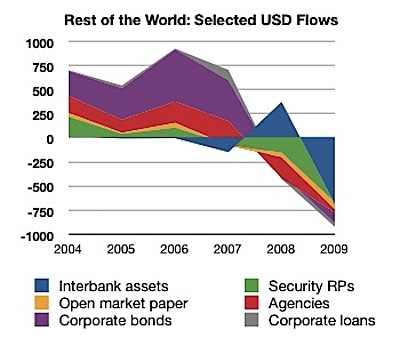
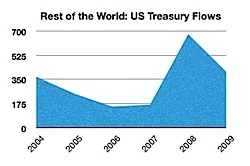
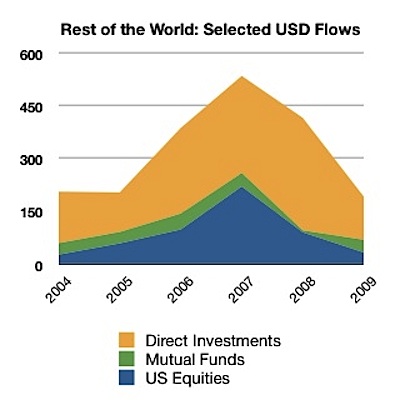


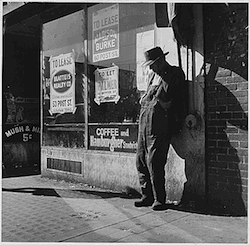
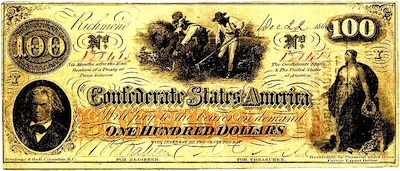
 Click these icons to email articles to friends.
Click these icons to email articles to friends.